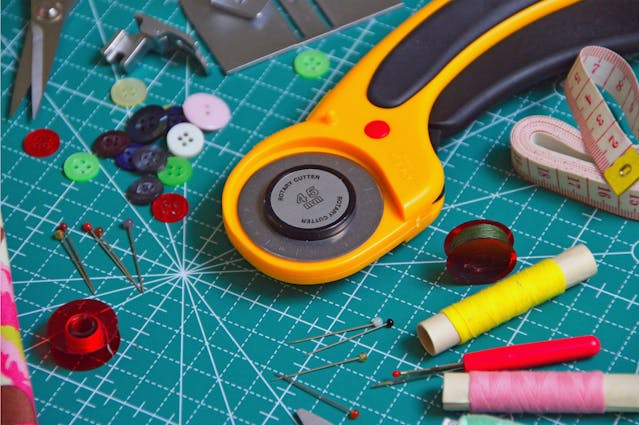Upcycling Sewing Projects for Beginners: How to Declutter Your Closet and Create New, Customized Items from Old Clothes
Let’s talk about shrinking your wardrobe without tossing your old fabrics into the dumpster. Repurposing old clothes into new, functional items helps reduce textile waste in landfills, especially as the fashion industry continues producing more fabrics to keep up with trends. The fashion industry is a trillion-dollar business, generating an estimated 92 million tons of waste annually. Without sustainable alternatives like upcycling, we could see even more textile waste piling up in landfills or littering water bodies.
In this article, we will share upcycling tips with beginner-friendly sewing projects, along with expert insights on how to declutter your wardrobe by repurposing old clothes into something new. Upcycling your clothes can be fun—it allows you to turn old or worn-out garments into custom tote bags, home accessories, and other reusable household items. We’ll also discuss eco-friendly sewing practices, essential sewing tips, and advice from sustainability experts.
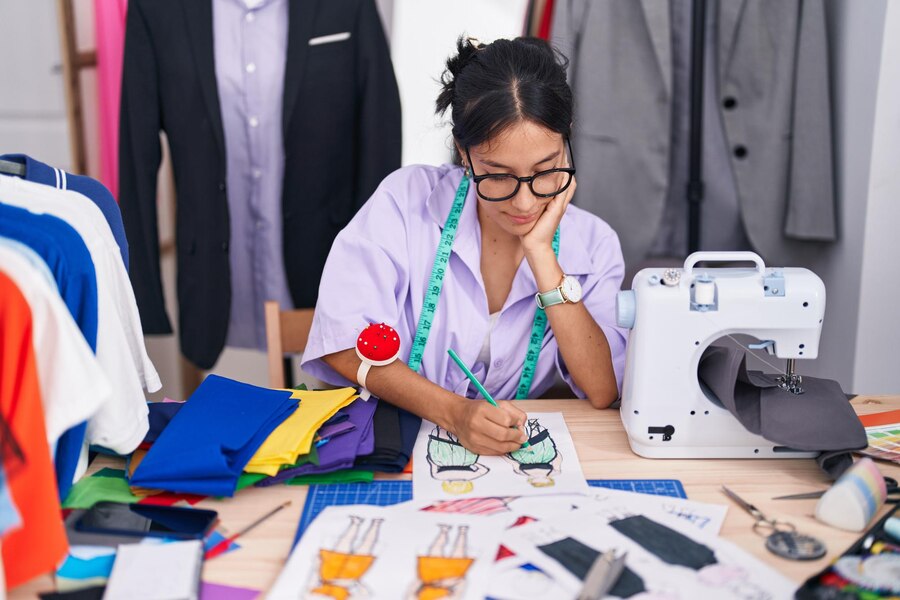
In This Article
- The Environmental Impact of Fast Fashion and Why Upcycling Matters
- Economic Benefits: Cost Savings in Upcycling
- Upcycling Sewing Projects for Beginners
- Interactive Element: Sustainability Calculator
- Conclusion
The Environmental Impact of Fast Fashion and Why Upcycling Matters
The Fast Fashion Crisis: A Wake-Up Call
The fashion industry remains one of the largest contributors to solid waste, primarily because fast fashion produces a large volume of low-quality, inexpensive clothing. According to a 2021 report by the Ellen MacArthur Foundation, less than 1% of the materials used to produce clothing are recycled into new garments.
The fashion industry is vast, and the rapid production of synthetic materials has a significant environmental impact. According to a 2023 study, polyester manufacturers produce an estimated 706 billion kg of greenhouse gases each year. With less than 3% of manufactured fabrics being recycled, upcycling your old clothes or shopping at thrift stores helps reduce the demand for new garments.
Expert Insight on Sustainable Fashion
In a 2021 interview with Vogue, Orsola de Castro, the co-founder of Fashion Revolution, emphasised the importance of upcycling in combating textile waste. “Upcycling isn’t just about creating something new from the old; it’s about seeing the value in the garments we already own,” de Castro said. “It teaches us to consume less and rethink the longevity of our clothes.”
Economic Benefits: Cost Savings in Upcycling
Upcycling is a cost-effective solution to minimise textile waste. According to a 2021 study and a report by the Waste and Resources Action Programme (WRAP), upcycling can reduce household spending on clothing and textiles by up to 50% annually. Another effective way to save on regular household items is by considering DIY projects, such as making upcycled bags, reusable rags, or muffins.
Upcycling Sewing Projects for Beginners
Let’s explore beginner-friendly projects that are ideal for honing your sewing skills.
#1. Fabric Utensil Holder
A fabric utensil holder is a great project to start with. You can make a simple utensil holder to store wooden spoons, forks, knives, and other utensils.
Materials Needed:
- Old shirt or fabric scrap (15” x 10”)
- Twine or ribbon for tying
- Sewing machine, scissors, thread, and measuring tape
Steps:
- First, cut a rectangular piece of fabric.
- Next, fold the bottom edge up by about 4 inches to form pockets.
- Sew vertical lines to create individual pockets for each utensil.
- Lastly, attach a piece of twine or ribbon to secure the pouch when rolled up.
Expert Tip: Use sturdy fabrics such as denim or cotton canvas for a more durable utensil holder. Lighter fabrics may wear out faster with repeated use.
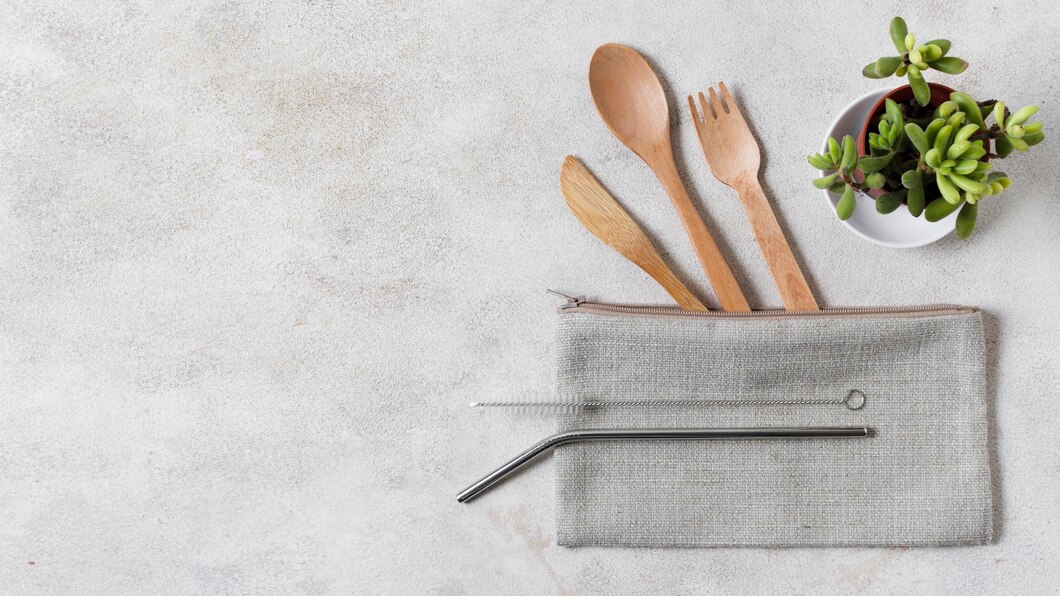
Learn More: 10 Innovative Eco-Friendly Projects for Students to Lead a Sustainable Future
#2. Farmers Market Tote Bag
Customised reusable tote bags are durable and far superior to plastic bags. Make one yourself using old fabric with just a few supplies.
Materials Needed:
- Old jeans, canvas, or heavy-duty fabric
- Sewing machine, scissors, thread
Steps:
- Cut two rectangular pieces (approximately 20″ x 18″) from the old fabric.
- Sew the pieces together along three sides, leaving the top open.
- Create handles by cutting and attaching fabric strips to the top of the bag.
Expert Tip: For extra durability, use French seams or overlock stitching, which reinforce the edges and make the bag long-lasting. According to the Textile Exchange, durable fabric choices can significantly extend the lifespan of a garment.
Interactive Table: Fabric Choices and Their Benefits
| Fabric | Best Used For | Durability | Eco-Friendly? | Reason |
| Denim (Recycled) | Tote bags, pot holders | High | Yes, if recycled | Recycled denim reduces water and energy use compared to new denim. |
| Organic Cotton | Pillowcases, utensil holders | Medium | Yes, lower pesticide use | Organic cotton avoids harmful chemicals during production. |
| Linen | Table runners, aprons | High | Yes, biodegradable | Linen is made from flax, which requires fewer resources to grow. |
| Recycled Polyester | Drawstring bags | High | Yes, if made from PET bottles | Made from recycled plastics, reducing landfill waste. |
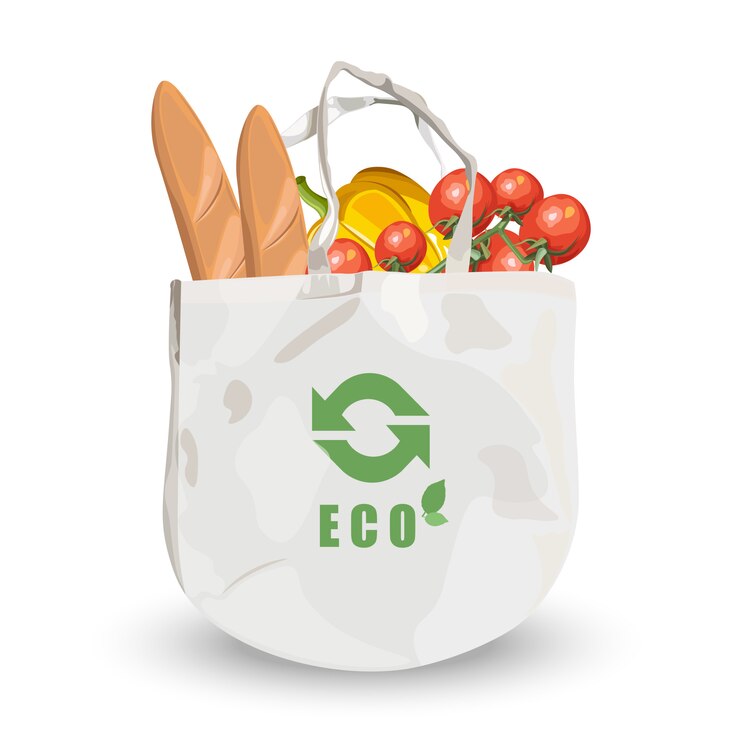
#3. Reusable Snack Bag
Reusable snack bags are perfect for outdoor activities, especially in areas where single-use plastics are banned. They are easy to make and durable enough to carry fruits, sandwiches, or snacks.
Materials Needed:
- Waterproof fabric for the inner lining (PUL or beeswax-coated cotton)
- Outer fabric (old jeans or cotton)
- Hook-and-loop tape (Velcro)
Steps:
- Cut two 10″ x 6″ pieces of fabric.
- Sew the pieces together along three edges, leaving one side open.
- Attach Velcro to the open edge for a resealable closure.
Sustainability Insight: Studies show that household plastic waste can be reduced by up to 80% by simply using fabric bags instead of disposable plastic bags. To create the perfect reusable snack bag, use fabrics that are food-safe and washable for long-term use.
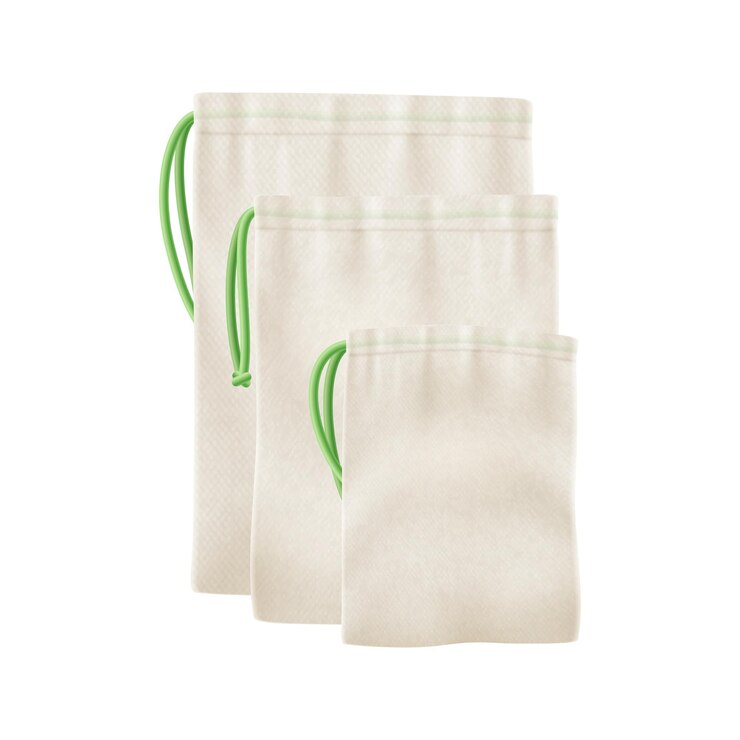
Learn More: 10 Eco-Friendly Crafts for Adults to Inspire Sustainability
#4. Drawstring Bag
Your old t-shirt, flannel shirt, or pillowcase can be upcycled into a simple drawstring bag. Drawstring bags are great for storing important items like jewellery or craft supplies.
Materials Needed:
- Old t-shirts or fabric scraps
- Twine or cord for the drawstring
Steps:
- Cut two rectangular pieces of fabric.
- Sew the pieces together along three edges.
- Fold the top down to create a small hem for the drawstring.
- Insert the cord and knot the ends to complete the bag.
Expert Insight: Rebecca Burgess, founder of Fibershed, highlights the versatility of natural fabrics like cotton and linen for upcycling projects. “Cotton, especially organic, remains durable through multiple repurposing cycles, making it ideal for projects like drawstring bags,” Burgess notes.
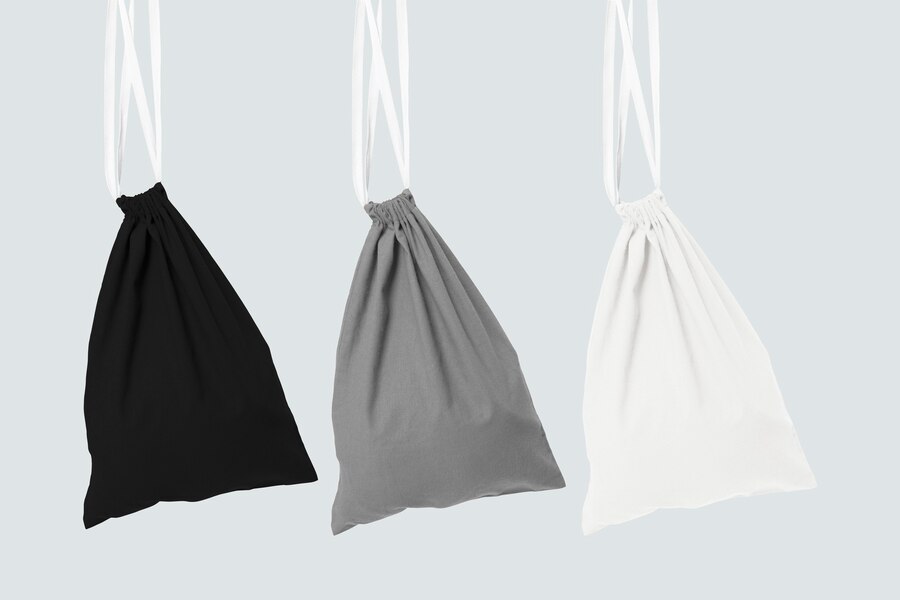
#5. Pot Holders
Denim or old towels are thick enough to prevent burns from hot pots—these sturdy fabrics can be repurposed into potholders. Unlike store-bought mittens, homemade customised potholders can be tailored to fit your hand and match your kitchen décor.
Materials Needed:
- Old jeans or thick fabric
- Cotton batting for insulation
Steps:
- Cut two 8” x 8” fabric squares and one 8” x 8” piece of batting.
- Sandwich the batting between the fabric squares.
- Sew the edges, and add quilting stitches for extra insulation.
Environmental Impact: Reusing durable fabrics to make simple household items reduces textile waste. According to a 2022 study, upcycling items such as potholders can extend product lifecycles and reduce the overall demand for new resources.
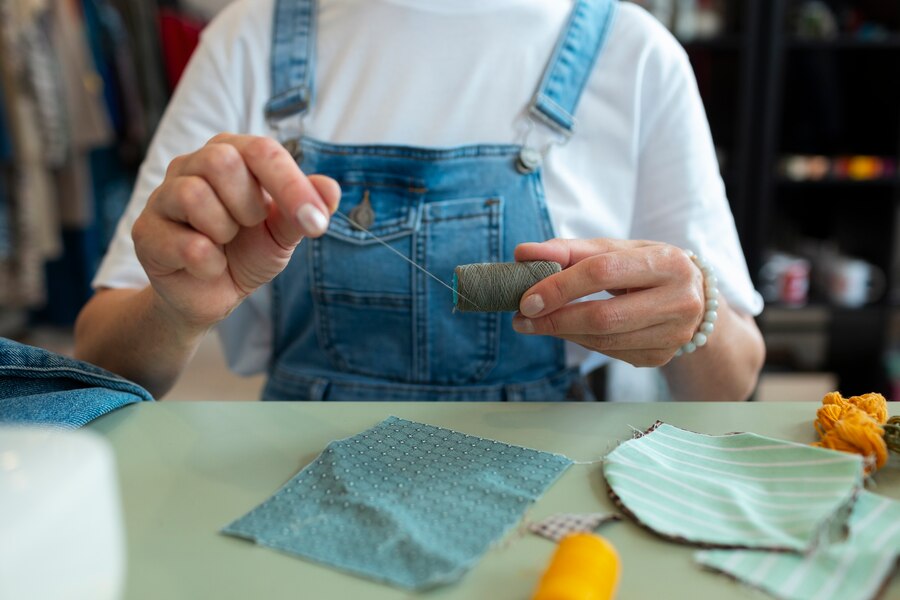
#7. Envelop Pillow
How about making a customised pillow cover with your old shirts or sweaters? The envelope pillowcase style makes it easy to remove and wash.
Materials Needed:
- Old shirts or fabric
- Pillow insert
Steps:
- Measure your pillow and cut the fabric to the correct size.
- Sew three sides of the fabric together, leaving an overlap for the “envelope” opening.
- Turn the fabric right-side out and insert the pillow.
Sustainability Insight: Upcycling an old shirt into an envelope pillowcase is an excellent example of circular design. According to reliable sources, prolonging the life of a garment by just nine months can reduce its carbon, water, and waste footprint by 20 to 30%.

Common Mistakes Beginners Make and How to Fix Them
It’s normal to encounter a few challenges while learning how to sew and upcycle. Here’s a list of common mistakes and expert-approved solutions.
- Mistake #1: Crooked Seams
- Fix: Use a seam guide or chalk to mark stitching lines. Practising regularly with scrap fabrics will help you improve your techniques.
- Mistake #2: Skipped Stitches or Thread Jamming
- Fix: Rethread your sewing machine and ensure you use needles that are the correct size for the fabric. Refer to your machine’s manual for troubleshooting.
- Mistake #3: Cutting Fabric Too Early
- Fix: Always measure your fabric twice and mark it before making any cuts. Using a rotary cutter can help with precision.
Interactive Element: Sustainability Calculator
To encourage a more interactive learning experience, here is a simple calculator to estimate the amount of textile waste you can prevent by upcycling. Enter the number of items you upcycle each month, and it will calculate the approximate reduction in waste.
| Items Upcycled per Month | Average Fabric Weight (per item) | Waste Prevented (per year) |
| 1 | 0.5 pounds | 6 pounds |
| 5 | 0.5 pounds | 30 pounds |
| 10 | 0.5 pounds | 60 pounds |
By upcycling just five items a month, you can prevent over 30 pounds of textile waste per year!
Conclusion
Upcycling old clothes into creative DIY projects is an effective and eco-friendly way to manage textile waste while honing your sewing skills. From simple utensil holders to intricate pot holders, these projects not only provide practical uses but also serve as artistic expressions of sustainability.
According to experts, adopting upcycling practices can significantly reduce the environmental impact of the fashion industry while fostering a mindset of mindful consumption. Whether you’re a beginner or someone looking to advance your skills, upcycling offers endless opportunities for creativity, sustainability, and personal growth.
So, grab your sewing machine, dig through your closet, and start transforming your old clothes into new, functional items that reflect your unique style and commitment to the environment!


